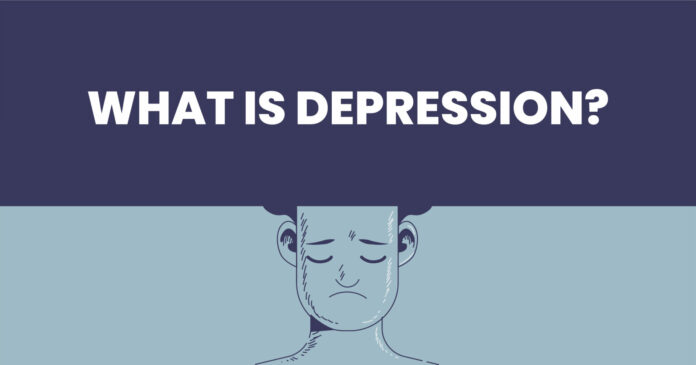Table of Contents
In the vast spectrum of human emotions, sadness is a colour we all paint with. It is the natural response to adversity, loss, or disappointment. But what happens when this transient shadow overstays its welcome, penetrating every aspect of our lives with a darkness that seems unyielding? This is the landscape of depression, a mental health condition that affects millions worldwide, redefining what it means to be ‘just sad.
Understanding depression is vital. It demands empathy, awareness, and open-mindedness beyond sympathy for the occasional blues. The following exploration will shed light on the multifaceted nature of depression, going deeper into its roots, ramifications, and pathways to healing.
Understanding Depression
At its core, depression is a complex and multifactorial mood disorder characterized by persistent feelings of sadness, worthlessness, and a lack of interest or pleasure in daily activities. However, this clinical definition, while accurate, only scratches the surface of a condition that is so much more.
Differentiating between regular sadness and clinical depression is essential. The former is a detailed, temporary emotion, while the latter is a state of existence. It’s like comparing a gentle wave, fleeting and consequential, to the vast, dangerous pull of an endless undertow.
Depression is not a monolith; it comes in various forms with unique nuances and challenges. Major depressive disorder is the most common iteration, accompanied by episodes of severe mood disruption. Persistent depressive disorder lingers longer, a constant weight on one’s shoulders.
Bipolar disorder, with its cycles of manic highs and depressive lows, turns emotional landscapes into rollercoasters. And seasonal affective disorder, tethered to the sun’s mercurial schedule, highlights the environment’s influence on our mental well-being.
The causes of depression are numerous and intertwined. Genetic predisposition, biological factors, and life circumstances can conspire to tilt the delicate balance of brain chemistry, leaving individuals vulnerable to the onset of this debilitating condition.
Signs and Symptoms
The signs and symptoms of depression are as varied as they are pervasive. While the hallmark features of despair and disinterest are universal, how they express themselves can be as unique as the fingerprints on our hands.
Physical manifestations include changes in appetite and weight, sleep disturbances, and unexplained aches and pains. Cognitive symptoms bring forth foggy thinking, trouble with concentration, and often a heightened, albeit distorted, sense of guilt or worthlessness.
Behavioural changes encompass everything from social withdrawal and neglect of responsibilities to a marked decrease in self-care. Suicidal thoughts or actions can be a harrowing undercurrent, too often an unwelcomed companion of this mental torment.
It is crucial to recognize that depression is not one-size-fits-all. One person’s symptoms may not mirror another’s and can evolve. This makes early detection and diagnosis complicated yet all the more critical.
Impact and Consequences
The reach of depression extends far beyond the individual suffering from it. Personal consequences profoundly affect relationships, careers, and overall quality of life. Social stigma and a lack of understanding can compound the struggle, leaving many to suffer in silence.
The economic cost of depression is staggering, as it is a leading cause of disability worldwide. Productivity losses, increased healthcare expenses, and the economic ripple effect of unemployment paint a grim picture of the fallout from untreated depression.
The physical health consequences of depression are a lesser-known but equally alarming aspect. It’s been likened to a silent assassin, as it significantly increases the risk of chronic conditions like heart disease, diabetes, and obesity – a fact often overshadowed by its mental toll.
Seeking Help
Thankfully, the shadow of depression is not inescapable. There is a path to light, and it begins with seeking help. A diagnosis of depression is not a life sentence but the first step towards the necessary support and intervention.
A variety of treatments are available that have shown effectiveness in managing depression. Therapy, particularly cognitive-behavioral therapy (CBT), equips individuals with the tools to reframe thought patterns and develop coping strategies. Medication, such as selective serotonin reuptake inhibitors (SSRIs), can correct chemical imbalances within the brain, alleviating symptoms for many.
However, the road to recovery is seldom without its bumps. The very nature of depression can be a hindrance in seeking help. The pervasive feelings of hopelessness and the energy-sapping nature of the condition make reaching out a Herculean task.
Supporting Someone with Depression
For those who love and care for someone struggling with depression, the role of a supportive pillar is paramount. It’s about creating an environment of empathy, support, and understanding. It’s about patience, persistence, and partnership in healing.
Understanding that depression is not a choice but a condition is the first step. Listening without judgment, helping, and encouraging professional help are potent tools in the support arsenal. The more we can construct a community around those affected by depression that recognizes and respects the struggle, the brighter the collective path forward will be.
Coping and Self-Care
For those living with depression, the line between merely existing and actively living can often seem faint. Self-care and coping strategies become lifelines in the storm.
Regular exercise, a balanced diet, and adequate sleep can nurture the body, thus nurturing the mind. Engaging in activities that once sparked joy, even if they now seem dulled, can invigorate the spirit. Mindfulness practices, such as meditation or yoga, can offer respite in the mind-weathering an internal storm.
It is about reclaiming agency and acknowledging the power of personal choices, no matter how seemingly insignificant. It is about fostering resilience, finding one’s voice amid the cacophony, and choosing life despite the pervasive pull of despair.
Conclusion
Depression is one of the most common yet misunderstood mental health conditions of our time. It is more than just feeling sad; it is a profound and disruptive experience that can cast a shadow over every facet of life. Yet, it is not insurmountable.
By fostering collective awareness, understanding, and empathy, providing robust support structures, and encouraging open dialogue, we can chip away at the stigma that keeps so many in the shadows. Every conversation, every shared experience, and every hand reaching out can be a beacon of hope for those navigating the labyrinth of depression.
The call to action is clear – educate, advocate, support, and, above all, be compassionate. Together, we can redefine the narrative around depression, shining a light on the challenges and the resilience and healing potential within each of us.





